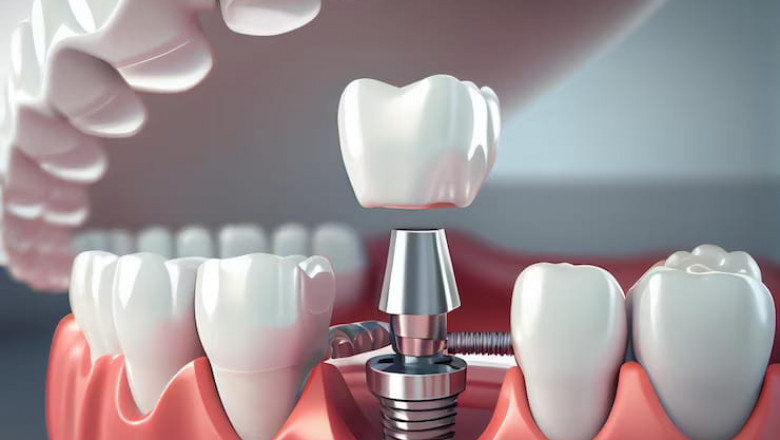views
Losing a tooth can be frustrating, whether due to injury, decay, or other dental issues. A single-tooth implant is often the best solution for restoring both function and appearance. But one of the biggest concerns many people have is: How painful is a single-tooth implant?
If you’re considering getting a Single Tooth implant Cost Dubai, understanding the procedure, pain levels, and recovery process can help ease your worries. Let’s dive into what you should expect.
Understanding the Single Tooth Implant Procedure
A single-tooth implant is a surgical procedure that replaces a missing tooth with an artificial root made of titanium. This root is placed in the jawbone, where it fuses with the bone over time, creating a strong foundation for a dental crown. The process typically involves three main stages:
Initial Consultation and Planning
Your dentist will assess your oral health, take scans, and determine if your jawbone is strong enough to support an implant.
Implant Placement Surgery
A small incision is made in the gum, and the titanium post is inserted into the jawbone. The area is then stitched up and left to heal.
Healing and Crown Placement
Over the next few months, the implant fuses with the bone in a process called osseointegration. Once healed, a custom-made crown is attached, completing the restoration.
Does Getting a Single Tooth Implant Hurt?
One of the most common fears surrounding dental implants is the pain factor. The good news? The procedure itself is not painful.
During the Procedure: Dentists use local anesthesia to numb the area, ensuring you don’t feel any discomfort during the surgery. Some patients may also opt for sedation if they feel anxious.
Post-Surgery Discomfort: Once the anesthesia wears off, you may experience mild to moderate discomfort, similar to having a tooth extracted. This can include swelling, tenderness, and slight soreness in the jaw.
Most people describe the pain as manageable and much less severe than they expected. Over-the-counter pain relievers and following your dentist’s aftercare instructions can help minimize any discomfort.
How Long Does the Pain Last?
Pain levels vary from person to person, but here’s a general timeline:
First 24 Hours: Some swelling and mild bleeding are common, but pain should be controlled with prescribed or over-the-counter painkillers.
Days 2–3: Peak swelling and tenderness may occur, but discomfort should start to fade.
One Week Later: Most of the initial soreness should subside, and you should feel much more comfortable.
After 2 Weeks: Healing should be well underway, with minimal sensitivity in the implant area.
If you experience severe pain beyond the expected recovery period, it’s important to check with your dentist to rule out any complications.
How to Minimize Discomfort and Promote Healing
Taking proper care after your implant surgery can help speed up recovery and reduce pain. Here are some key tips:
Follow Post-Surgery Instructions: Stick to soft foods, avoid hot or spicy meals, and refrain from using straws to prevent pressure on the implant.
Use Cold Compresses: Applying ice packs can help reduce swelling in the first 24 hours.
Maintain Oral Hygiene: Gently rinse with salt water and brush carefully around the implant site to prevent infection.
Avoid Smoking or Alcohol: These can slow down healing and increase the risk of complications.
Why a Single Tooth Implant Is Worth It
Despite the Single Tooth Implant Cost in Dubai, a single-tooth implant offers long-term benefits that far outweigh any short-term pain:
Natural Look and Feel: The implant mimics the appearance and function of a real tooth.
Durability: With proper care, implants can last a lifetime.
Prevents Bone Loss: The implant stimulates the jawbone, preventing deterioration.
No Damage to Other Teeth: Unlike bridges, implants don’t require altering adjacent teeth.
Conclusion
While the idea of a dental implant may seem intimidating, the actual pain is usually minimal and short-lived. With proper care and guidance from your dentist, you can expect a smooth recovery and a long-lasting, natural-looking replacement for your missing tooth.






















Comments
0 comment